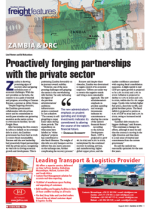The World Bank rates Zambia as “stable” politically, pointing out that the country has had nine presidential elections and four different political parties ruling it since independence in 1964. They include the United National Independence Party (UNIP) which headed a one-party state until 1991, Movement for Multiparty Democracy (MMD 1996-2011), Patriotic Front (PF2011-2021), and currently the United Party for National Development (UPND). Current president Hakainde Hichilema of the UPND was elected in August 2021, defeating Edgar Lungu of the Patriotic Front. The next presidential elections will be held on August 12, 2026.Rapid population growth of 2.7% a year is seen as one of the biggest challenges facing the government.The population is anticipated to double from the current 20 million in the next 25 years, putting pressure on the demand for jobs, health care, and other social services.The Democratic Republic of the Congo (DRC) is also seen as relatively stable although it does face some serious challenges, including ongoing conf lict in the east of the country. According to the World Bank, ongoing mining sector investments and exports of key mineral commodities remain key drivers of growth but the country remains among the five poorest nations in the world. In 2022, nearly 62% of Congolese, around 60 million people, lived on less than $2.15 a day. President Felix Tshisekedi has been in office since 2019. The country heads back to the polls in December this year.The Zambian government is striving to achieve ambitious economic reforms to improve the climate for doing business and expand the agricultural sector.“

